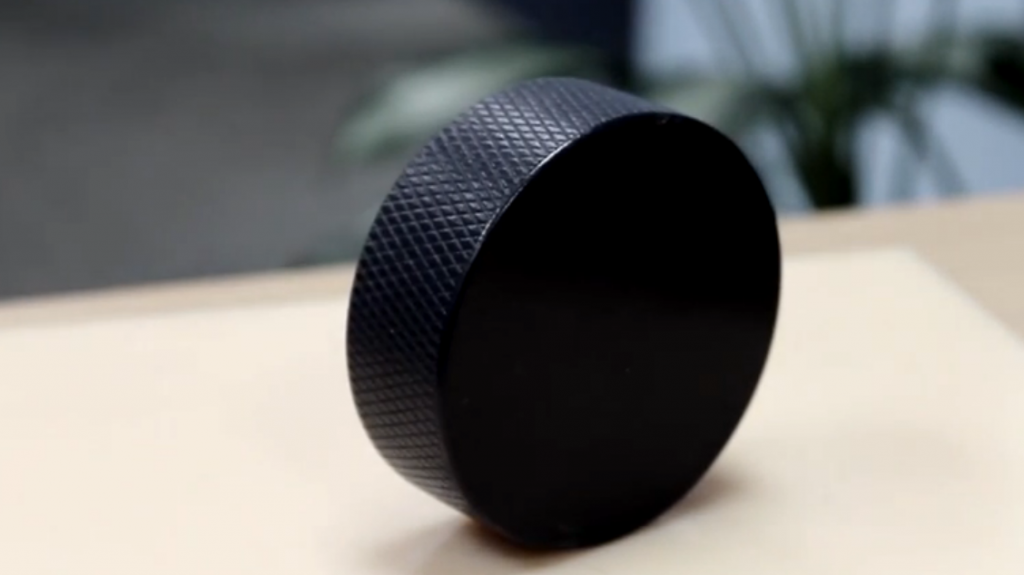In all sports, there are efforts to make adjustments to enhance the play without fundamentally changing the game. Some of these result in new regulations to deal with previously unthought-of possible cheats or become part of the regular game regimen requiring new innovation to try and push the game forward. The material used for baseball bats, for example, is an area of possible improvement with some modifications becoming acceptable practice while others, such as corking the bat, are banned.
In ice hockey, skates, sticks, and pucks are the three main areas of focus for technological innovations, any one of which can make a fractional difference giving an advantage noticeable only to the very best. The ice hockey puck is made of vulcanized rubber, black, one inch thick, three inches wide, and weighing approximately six ounces.
One of the first innovations with regard to the puck occurred back in the 1880s when the puck shape was changed from square to round. More recent tinkering has actually focused on the visibility of the puck to television spectators in the hopes that it would create a broader television audience. Despite several efforts to do so, however, the modifications never stuck.
The fascination with the puck has not waned and this recently led the folks at Proto3000 to create their own puck via 3D printing. There wasn’t necessarily an interest in improving on the puck so much as the idea that if something can be done, it should be. If any benefits to a 3D puck could be found, however, it would be well worth the fun of printing it! They printed their puck from a mix of TangoBlackPlus and VeroWhitePlus at an A95 shore value and then took it to the rink to subject it to the moves of retired AHL player Jeff Prendergast.
When the folks at Proto3000 aren’t engaged in puck production, they operate as an engineering solutions provider connecting individuals and companies around the world with the technology needed to enhance and maintain their creativity and productivity. Let us know your thoughts on this story in the 3D Printed Hockey Puck forum thread on 3DPB.com.
